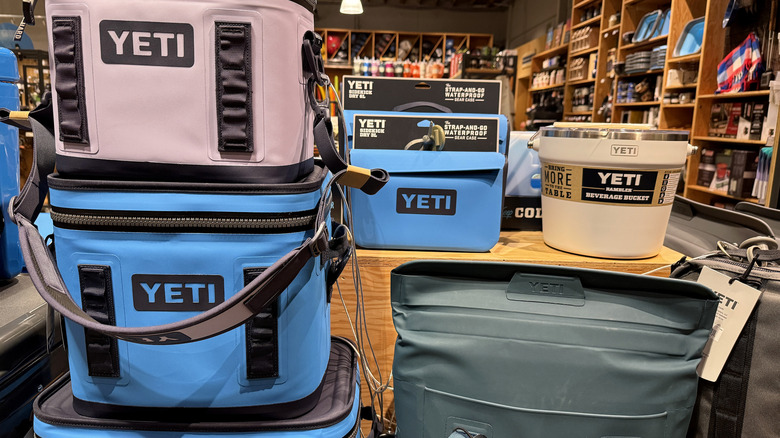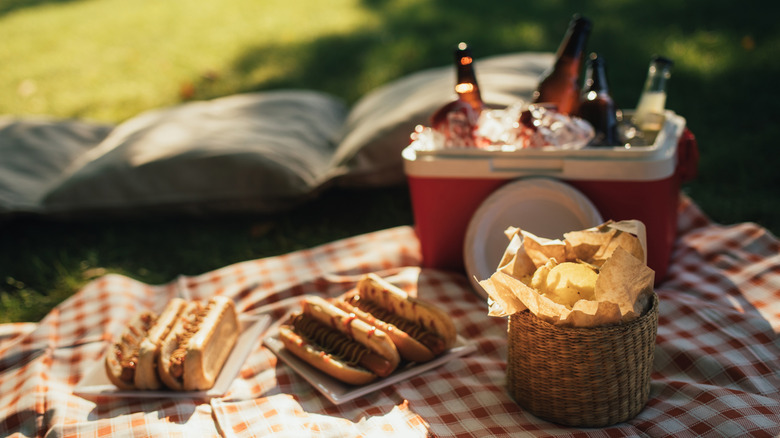How Long Do Ice Packs Stay Cold In A Cooler?
If you're planning a picnic or taking perishables on a long trip, you might want to know in advance how long your ice packs will last; after all, perishables can only be safely stored in temperatures above 40 degrees Fahrenheit. But with the many types of ice packs and many brands of coolers available, it's probably no surprise that there isn't a straight answer to this question.
In the most general situation with generic ice packs and an unspecified and inexpensive cooler, your ice probably won't last 24 hours. If you leave an ice pack out in the open, it only stays cold for around four to six hours, so every hour beyond that depends on the quality of your cooler.
So, what kind of cooler options are out there? On one end of the spectrum, military-grade equipment can maintain a 32-degree temperature for up to five days. On the other, a $5 cooler from a discount store will only extend your ice pack's life by an hour or two, if you're lucky.
The best-of-the-best option isn't really available to civilians, but we can still do better than that discount cooler. The first step, however, is to choose between a soft cooler and a hard cooler.
What kind of cooler should you use?
Soft coolers are designed to be lightweight and easy to carry during recreational activities. They won't keep ice for as long as a hard cooler in most situations, but combining cooling capabilities with portability can get expensive. Top-end coolers like the Yeti Hopper Flip 18 can keep ice frozen for up to 24 hours, but this level of quality tends to cost a few hundred dollars. More budget options may not perform as well, and you'll need to rely on product-specific reviews to get a clear estimate.
A hard cooler can keep its contents frozen for longer, but in exchange, they tend to be big and bulky, and with less capacity. Yeti is also a top brand for hard coolers, and a Yeti Roadie costs around $100 less than a similarly sized soft cooler from the Hopper series. During tests, the Yeti Roadie series keeps its contents cold for up to 72 hours.
"Pay for what you need" is the best advice when buying a cooler, since a few extra hours of cold retention can significantly raise the price. You don't need to pay for 24 hours if you'll only ever need 12, and you don't need to pay extra for portability if you don't plan to carry it by hand often.
Top tips for keeping your ice packs cooler for longer
If you just want to maximize the results from equipment you already have, there are a few best practices to keep in mind. First, you should always pre-cool everything. This includes the cooler as well as its content: Keep all of your food or drink in the fridge, and fill your cooler with ice a few hours before packing.
The second tip is to pack the cooler like an expert — as tightly as possible. The more air pockets in your cooler, the quicker the temperature will rise. While you're out and using your cooler, do your best to place it somewhere cool and shaded, and most importantly, don't open the cooler more than necessary. This lets in a lot of heat and significantly affects cold retention.
The best type of ice or ice packs to use is a hotly debated topic. One thing we know for sure is that the bigger a block of ice or ice pack is, the slower it will melt. That's why many recommendations suggest lining the bottom or sides of your cooler with large ice packs and filling the gaps between your cans or bottles with crushed or cubed ice. You can also look into dry ice if you want to keep ice cream frozen in your cooler, though it needs to be handled with care, especially if there are children around.


